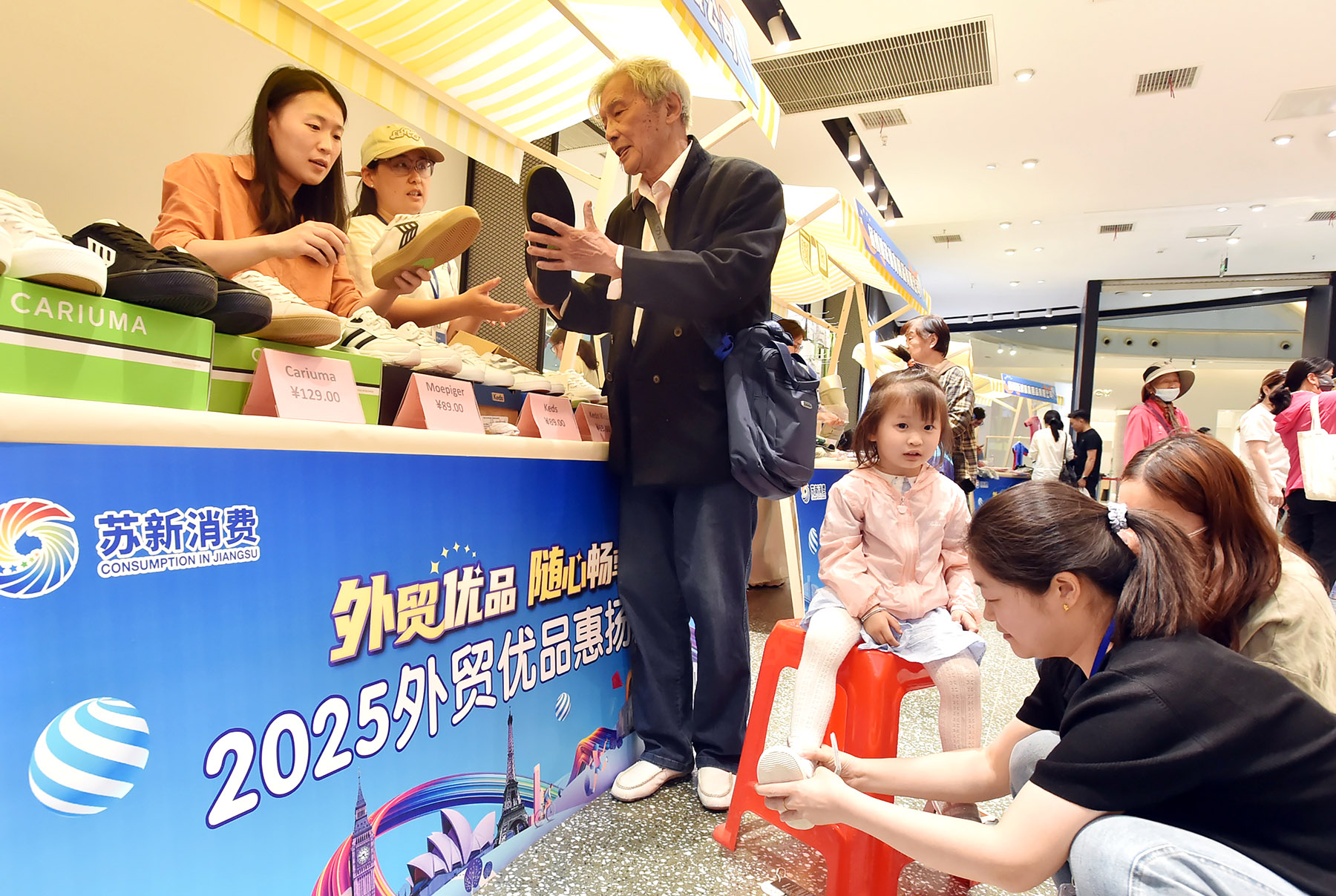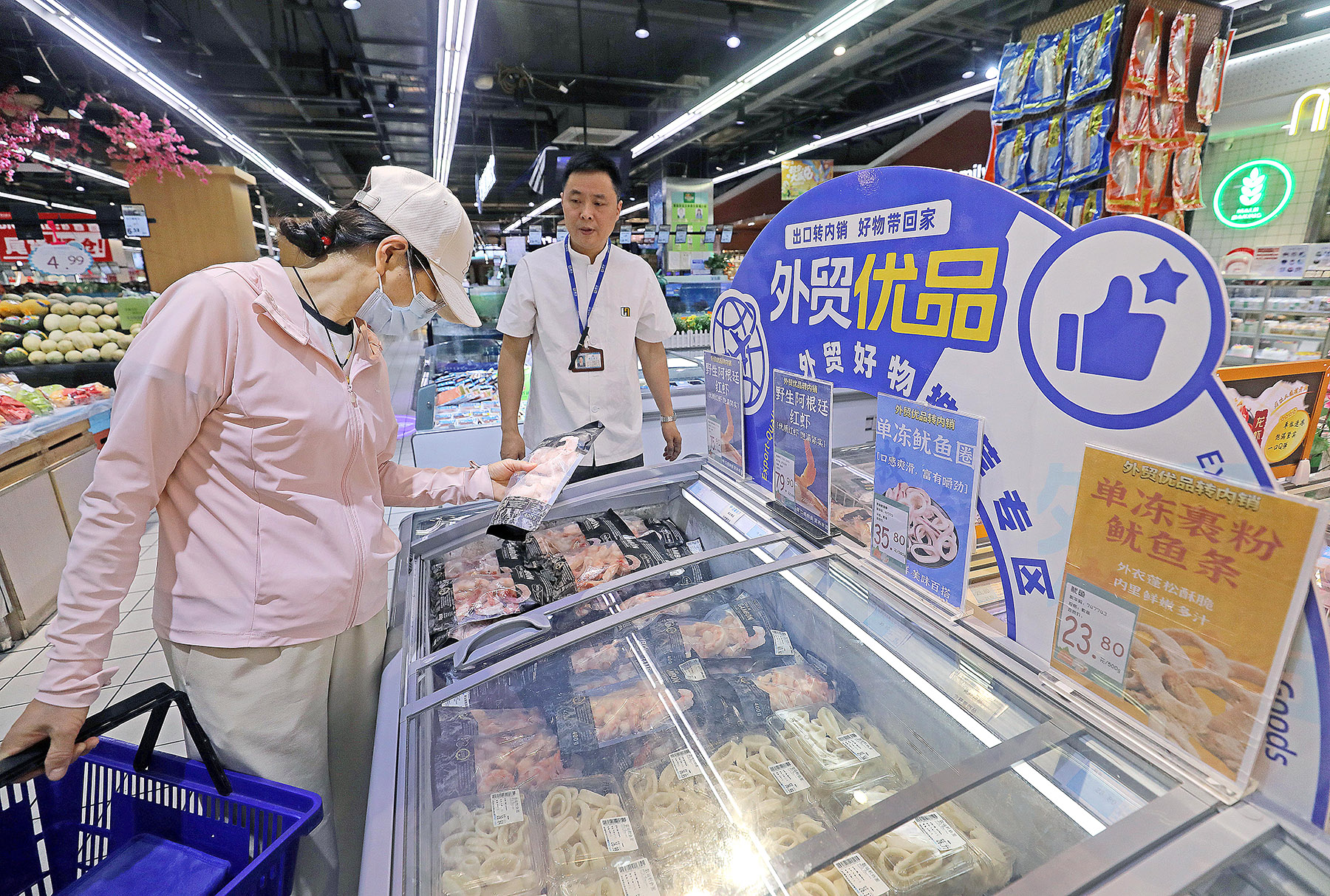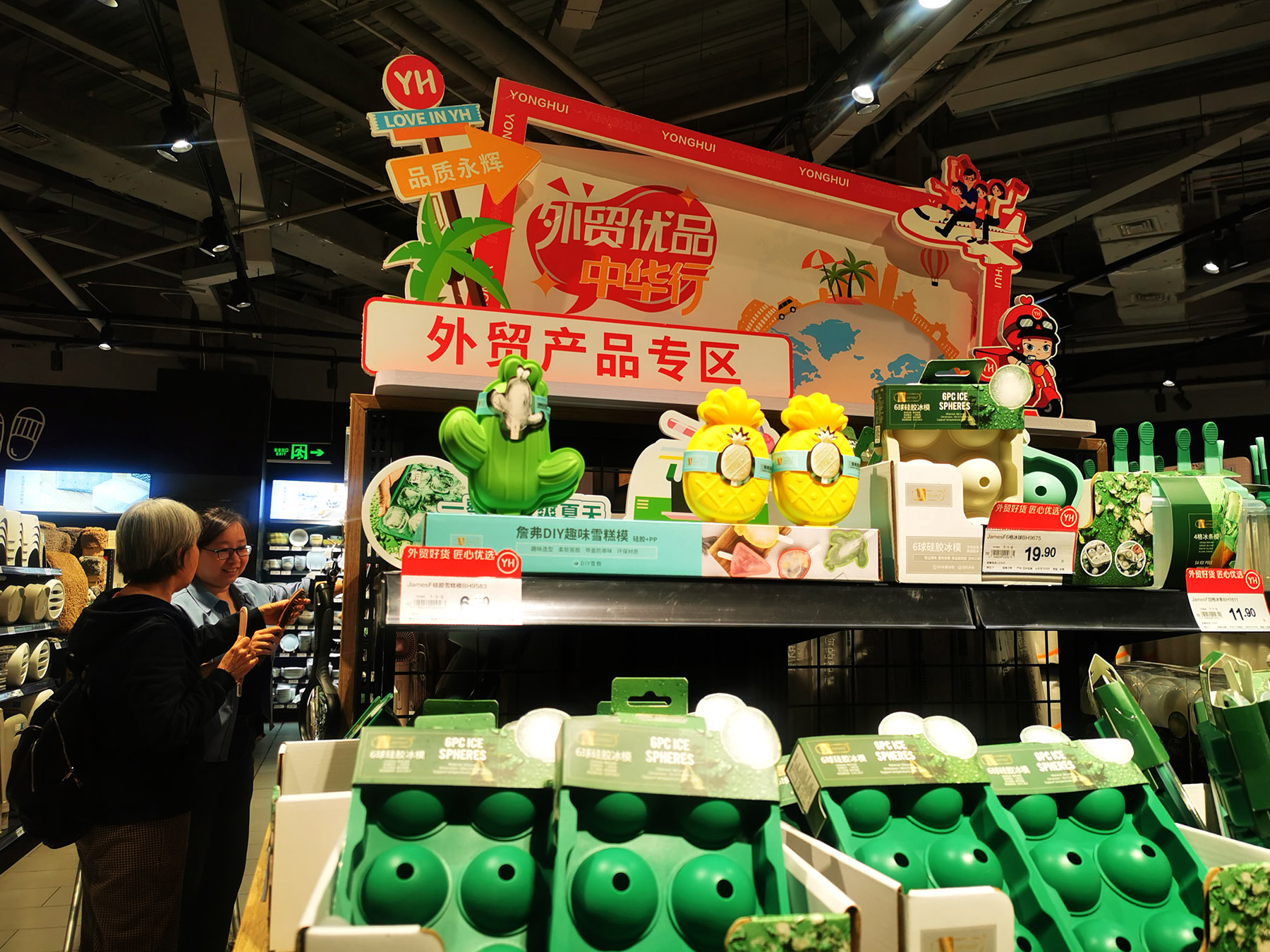Huge homegrown consumer market offers room for tariffs-hit Chinese exporters to push products at home

China has rolled out a set of measures to help foreign trade companies expand into the giant domestic market to hedge against the uncertainties of foreign business.
For China’s exporters, switching to sell in the domestic market comes with challenges, including adapting to different standards, price systems, and domestic consumer preferences.
“Export-focused production lines and standards don’t always align with domestic norms. Rebuilding supply chains and consumer trust from scratch is costly and complex,” said Zhou Mi, a senior researcher at the Chinese Academy of International Trade and Economic Cooperation.
Addressing these challenges requires close collaboration between the government and retailers to help export firms overcome “growth pains”, Zhou said.
However, China wields great power in tackling trade pressure as it has a huge domestic market with 1.4 billion potential consumers.
The Ministry of Commerce launched a dedicated campaign in April to promote the domestic sales of quality export products. The initiative had helped secure over 167 billion yuan ($23.15 billion) in intended purchase agreements as of early May, attracting the participation of more than 2,400 foreign trade enterprises and 6,500 buyers.
“The Ministry of Commerce will focus on helping 10 major provinces in foreign trade and consumption, and carry out a series of special matchmaking activities around key industries,” said Sheng Qiuping, vice-minister of commerce, during a recent conference.
So far, activities have been launched in provinces such as Jiangsu, Hainan, Hubei, Hunan, and Shandong.
According to the commerce ministry, events have mainly focused on helping industries with foreign trade advantages, like lighting, household appliances, furniture and home furnishings, and food.
“As the world’s second-largest consumption market, China has the largest middle-income group in the world, with stable growth in investment and consumption and enormous potential,” said Xu Man, a researcher at the Chinese Academy of International Trade and Economic Cooperation.
Multiple online and offline retailers including JD, Alibaba’s online trading platform 1688, and Yonghui Superstores said they would like to provide more domestic sales channels for foreign trade firms facing export obstacles.

For instance, 1688 said the platform will provide sales assistance services and reduce commissions for foreign trade companies with inventory backlogs. Companies can also negotiate a cooperation model with the platform.
Hangzhou Kara Pet Products Co Ltd, a foreign trade firm that mainly makes cat stands, dog beds, plastic feeders for pets, and dog chains, said it has exported products to multiple countries and regions such as the US, Europe, Australia, and Japan, with annual output value exceeding 200 million yuan ($27.8 million). But business recently has been affected by tariff uncertainties.
“For products we have finished manufacturing, US customers didn’t cancel the orders, (but) they asked us to suspend the shipments. Facing such a situation, we believe that we still need to consider building overseas factories,” said Chu Qinqin, the company’s founder.
Chu said orders from the US had accounted for one-third of its total orders, and the company now plans to further expand its business in other countries.
In the past few years, it expanded overseas in Japan, Russia, and Brazil, and business in those markets began to pick up last year with growing demand from consumers.
“The suspension of the US orders has little impact on the operation of the entire company, and we remain optimistic. We also sell in China, with a change of styles of the products, despite the number of orders being much smaller than the exports,” Chu said.
She added that if foreign trade firms would like to further shift their business domestically, they need to get used to processing smaller orders, as people tend not to stock up on goods in China, given the intense competition.
Peng Jianzhen, president of the China Chain Store and Franchise Association, said that with the ongoing consumption upgrade trend, China has many opportunities for exporters to expand local sales if there are supplies of high-quality, new-type products that meet the demand of domestic consumers.
If foreign trade firms make some product “adjustments to cope with the demand of domestic consumers and domestic standards, there is room for further growth”, Peng said.

Guangzhou Boqun Textile Technology Co Ltd, a maker of knitted and woven textile products, said that due to uncertainties in the foreign trade business, it plans to expand sales channels in China to offset the impact.
Last year, foreign trade business of the company, which is based in Guangzhou, Guangdong province, accounted for 60 percent of the total. Despite its foreign trade business volume not being significant in the US, tariff uncertainties have negatively impacted the firm.
“This year, we plan to shift our focus to the domestic market due to tariff policies and intensified competition in foreign trade. Domestic customers have indicated a growing demand for some foreign trade products,” said Li Zheyu, general manager of the company.
Companies with already established (brand-building) strategies have indicated stronger overall risk resistance abilities and are relatively less affected by external factors such as trade frictions, said Ashley Wu, senior director of business development of the Trade Desk in China. The Trade Desk is a California-based global advertising technology firm.
Expanding into the domestic market is undoubtedly an additional path for China’s export-oriented enterprises, but like any single overseas market, they cannot become overly reliant on it, said Xu Hongcai, deputy director of the economic policy commission at the China Association of Policy Science.
“Enterprises must strike a careful balance, leveraging the domestic market as an alternative channel while maintaining a diverse global footprint,” Xu said.
Pivoting to the domestic market is a trend that fits with China’s growing efforts to boost domestic demand.
Expanding consumption was listed as a top priority among this year’s tasks in the Government Work Report released in March, and various promotional activities are expected to be carried out nationwide throughout the year.
The commerce ministry and five other departments launched the inaugural year of the “Shopping in China” campaign on April 13.
As one of the latest activities of the campaign, the ministry and related entities organized an online shopping festival from April 28 to May 12, with the opening ceremony held in East China’s Wuxi, Jiangsu province.
For the festival, more than 200 activities were held in different regions, including an online shopping event focused on sales of African products in Hunan province.

For the “Shopping in China” campaign, the commerce ministry encourages local governments to hold debut performances, exhibitions, and distinctive events in different forms and formats.
Key pedestrian streets, commercial complexes, shopping malls, supermarkets, and outlets are encouraged to launch promotions and high-quality new products, according to the guideline.
Different provinces and cities are encouraged to hold activities such as food markets and culinary exchanges, the guideline said.
They should also publish recommendation lists and maps of delicious food, launch high-quality tourist routes, and organize domestic and international cultural performances, high-level sports events, and museum exhibitions.
Boosted by multiple favorable policies, China’s consumption market has indicated a trend of steady growth.
In the first quarter, retail sales of consumer goods in the country totaled 12.47 trillion yuan, up 4.6 percent year-on-year, according to the National Bureau of Statistics.
Amid the pivot to the domestic market for Chinese exporters, there has been a glimmer of light amid Washington’s ongoing tariff war.
According to a joint statement released on May 12 by the world’s two largest economies after a high-level meeting held in Geneva, the US agreed to slash its 145 percent tariffs on Chinese imports to 30 percent, while China agreed to lower its tariffs on US goods to 10 percent from 125 percent.
Though the current tariff level is still far from business-friendly, exporters, importers, and consumers are able to share the burden of the tariffs, paving the way for at least a short-term recovery in overall trade activity, executives said.
The outcome of the recent trade talks reflects a significant departure from the US administration’s “maximum pressure” strategy that defined its attempts to force economic concessions from China through unilateral tariff hikes, said Luo Zhiheng, chief economist at Yuekai Securities.
“When confronted with China’s firm and measured countermeasures, the efficacy of such unilateral actions proved less substantial than US policymakers had anticipated,” Luo said.
“This miscalculation has necessitated a recalibration of Washington’s approach, moving away from coercion toward a more pragmatic negotiating framework.”
As the 90-day countdown ticks, businesses on both sides of the Pacific are scrambling to secure available container slots and shipping capacity for the previously sluggish China-US shipping routes.
Zhang Wulin, general manager of a digital technology company in Dongguan, Guangdong, said he has seen a rapid rebound in US orders following the tariff reductions.
“All our sales representatives are now busy with shipping and have no time to count the order volume,” he said.
However, analysts cautioned that while the current tariff reduction is a positive step, enterprises need to take a broader, more holistic view of the trade dynamics between the two countries and prepare for potential future uncertainties.
There are still significant uncertainties surrounding the sustainability of this tariff pause and future trade negotiations between Beijing and Washington, especially in the face of an ever-changing tariff policy of the US administration, said Wang Wen, dean of Chongyang Institute for Financial Studies at Renmin University of China.
Contact the writers at zhuwenqian@chinadaily.com.cn


